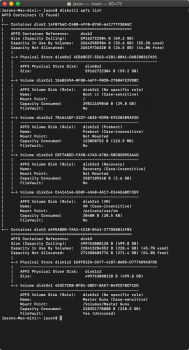I find my MacBook 5,1 (4GB Ram, 10.14.3) slow when performing tasks such as making 4K videos using FCPX, ect. Can I upgrade my memory to DDR3 - 4GB - Bus 1066Mhz - PC3 - 8500S? It is possible?
On Apple Support page:
Applicable model
MacBook (13-inch, Aluminum, Late 2008)
Memory specifications
This MacBook model has these memory specifications:
Number of memory slots 2
Base memory 2 GB (but also configured to order)
Maximum memory 4 GB
Memory card specifications - Double Data Rate Small Outline Dual Inline Memory Module (DDR SO-DIMM) format
- 30mm
- 1 GB or 2 GB
- 204-pin
- PC3-8500 DDR3 1066 MHz Type RAM
Additional notes For best performance, don't mix sizes; always install two identical memory modules (a pair of 1 GB, 2 GB, or 4 GB memory modules).
These are the original memory in my MacBook now:


Thank you
On Apple Support page:
Applicable model
MacBook (13-inch, Aluminum, Late 2008)
Memory specifications
This MacBook model has these memory specifications:
Number of memory slots 2
Base memory 2 GB (but also configured to order)
Maximum memory 4 GB
Memory card specifications - Double Data Rate Small Outline Dual Inline Memory Module (DDR SO-DIMM) format
- 30mm
- 1 GB or 2 GB
- 204-pin
- PC3-8500 DDR3 1066 MHz Type RAM
Additional notes For best performance, don't mix sizes; always install two identical memory modules (a pair of 1 GB, 2 GB, or 4 GB memory modules).
These are the original memory in my MacBook now:
Thank you
Last edited:


